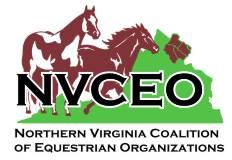| Horse Trailer
Hauling Tips
Before you
go out on the road with a horse in tow, be familiar and confident with
all aspects of your truck and trailer.
If you are
a first time driver, practice driving the combination before you ever
put a horse in it. Backing a trailer can seem intimidating, but it
really isn't too hard if you know the secret. Put your hand on the
bottom of the steering wheel and turn it in the direction you want the
back of the trailer to go. If you want the trailer to move sharply,
turn the wheel before you move the vehicle. If you want to turn more
gradually, turn the wheel as the vehicle is moving.
This works
for either a gooseneck or a tag-a-long trailer. A tag-a-long with a
long tongue is easier to back than a trailer with a short tongue. A
tag-a-long trailer that has a dressing room is also easier to back
than a trailer without one.
If you are
only hauling one horse, put him on the driver's side. If you are
hauling more than one horse, put the heavier one on the driver's side.
Roads are usually crowned higher in the middle so putting the heavier
load on this side will help balance the trailer.
If you have
a friend with you, and you really should not haul alone, familiarize
him/her with you rig. If you should become incapacitated for some
reason, your friend may have to take over.
Before you
leave on a trip, take the time to check over the rig.
· Check
the tow vehicle.
· Check
and replenish engine fluid levels and wiper fluid. Towing puts extra
stress on the radiator, brakes, and transmission so make sure
everything if in top working order.
· Make
sure the ball on the tow vehicle is the correct size for the trailer.
· Check
tire pressure in the tires of the tow vehicle and the trailer.
Improper tire pressure is one of the most common reasons for trailer
sway.
· Check
lug nuts on the wheels. Wheel nuts and bolts should be torqued before
first road use on a new trailer and after each wheel removal. Check
and retorque after the first 10 miles, 25 miles, and again at 50
miles.
· Check
the inside of the trailer for bees and wasp nests.
· Check
over your hitch, coupler, breakaway brake battery, and safety chains.
Make sure all lights and the brakes are working properly before you
load the horses.
· When
the horses are loaded make sure all doors are latched properly and
horses are tied.
· Drive
down the driveway and before you drive onto the road, get out and
check your hitch assembly again. Take a look at the horses too, to
make sure they're good to go.
· If
you happen to stop somewhere where the rig has been left unattended,
check everything all over again. Someone may have been tampering with
the trailer or the horses.
Driving a
horse trailer requires some special precautions. The extra weight will
make stopping and starting distances longer and you will not be able
to accelerate as quickly as if you did not have the trailer,
especially if you have a downsized vehicle. So drive at least 5 miles
under the speed limit and stay a good distance from the vehicle in
front of you.
Change
lanes gradually and always use your turn signals.
Use a lower
gear when traveling up or down steep grades. On long grades, downshift
the
transmission and slow to 45 mph or less to reduce the possibility of
overheating.
Always
consider the horses in the trailer. Give them time to prepare for
stops. Don't accelerate quickly, and make sure the trailer has cleared
the turn, straightened out, and the horses have regained their balance
before you return to normal speed. Travel over bumpy roads carefully.
If you hear
or feel anything that isn't normal, stop and check it out.
Carry an
automobile emergency kit with you and an emergency kit for the horses.
A human emergency kit is also a good idea.
Carry a
cell phone or CB.
Your auto
club roadside assistance may not cover your towed vehicle. There is
an emergency road service available called US Rider for people who are
hauling horses. A membership can give you some peace of mind. You can
find them on line at
www.usrider.org.
You may find others by searching online
Remember
that if you have an accident and you become incapacitated for one
reason or another, the emergency personnel and police will most likely
not have a clue how to handle your horses. In a visible place in your
tow vehicle and/or trailer, put a list of emergency numbers for them
to call - your veterinarian, friends, or family members who would be
able to help make decisions about your horses.
Whether you
are traveling one mile or 1000 miles, once you leave your driveway you
are at risk. By being prepared for emergencies, taking precautions and
driving defensively you have increased your chances to have a safe and
enjoyable trip with your horse.
³
|
